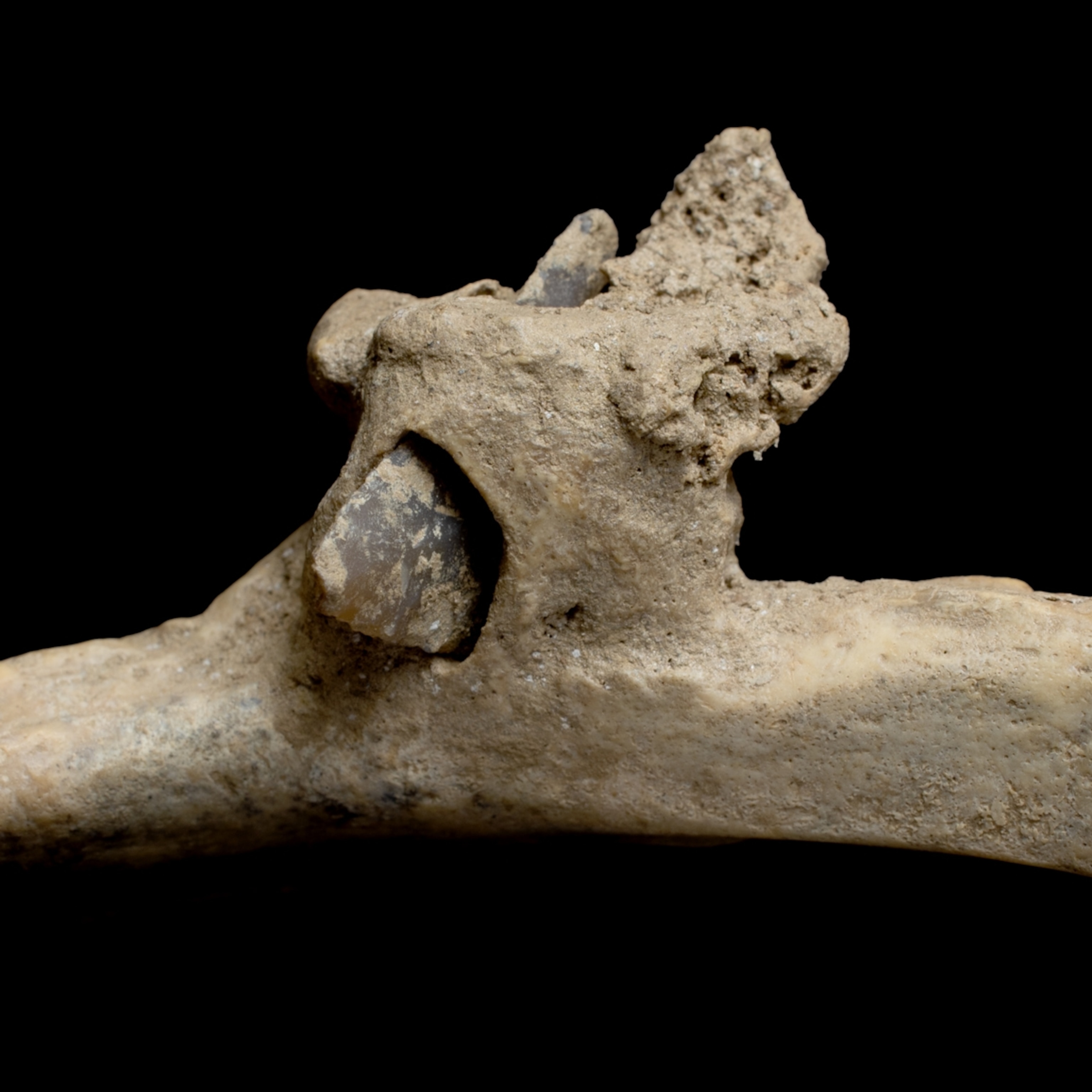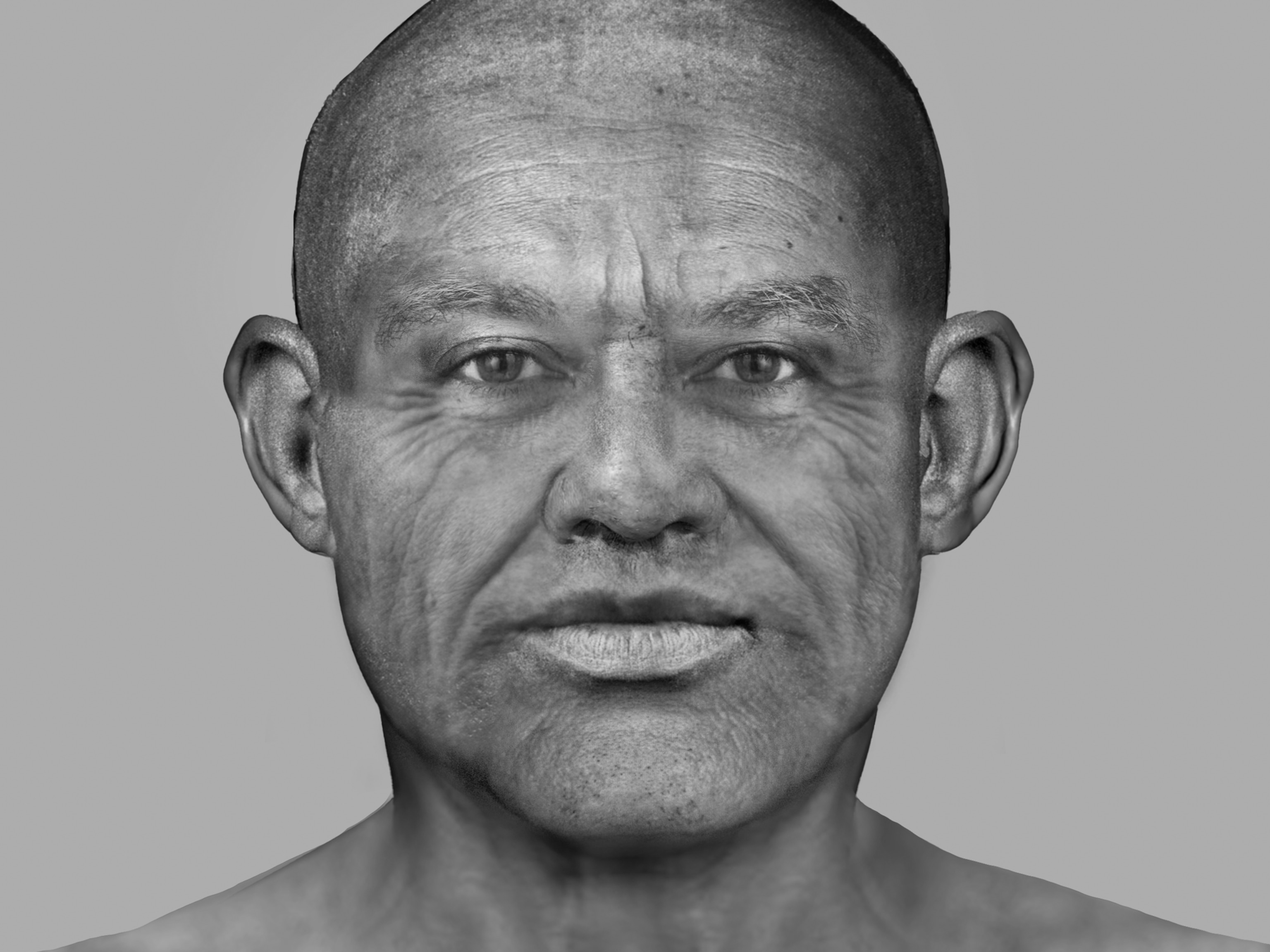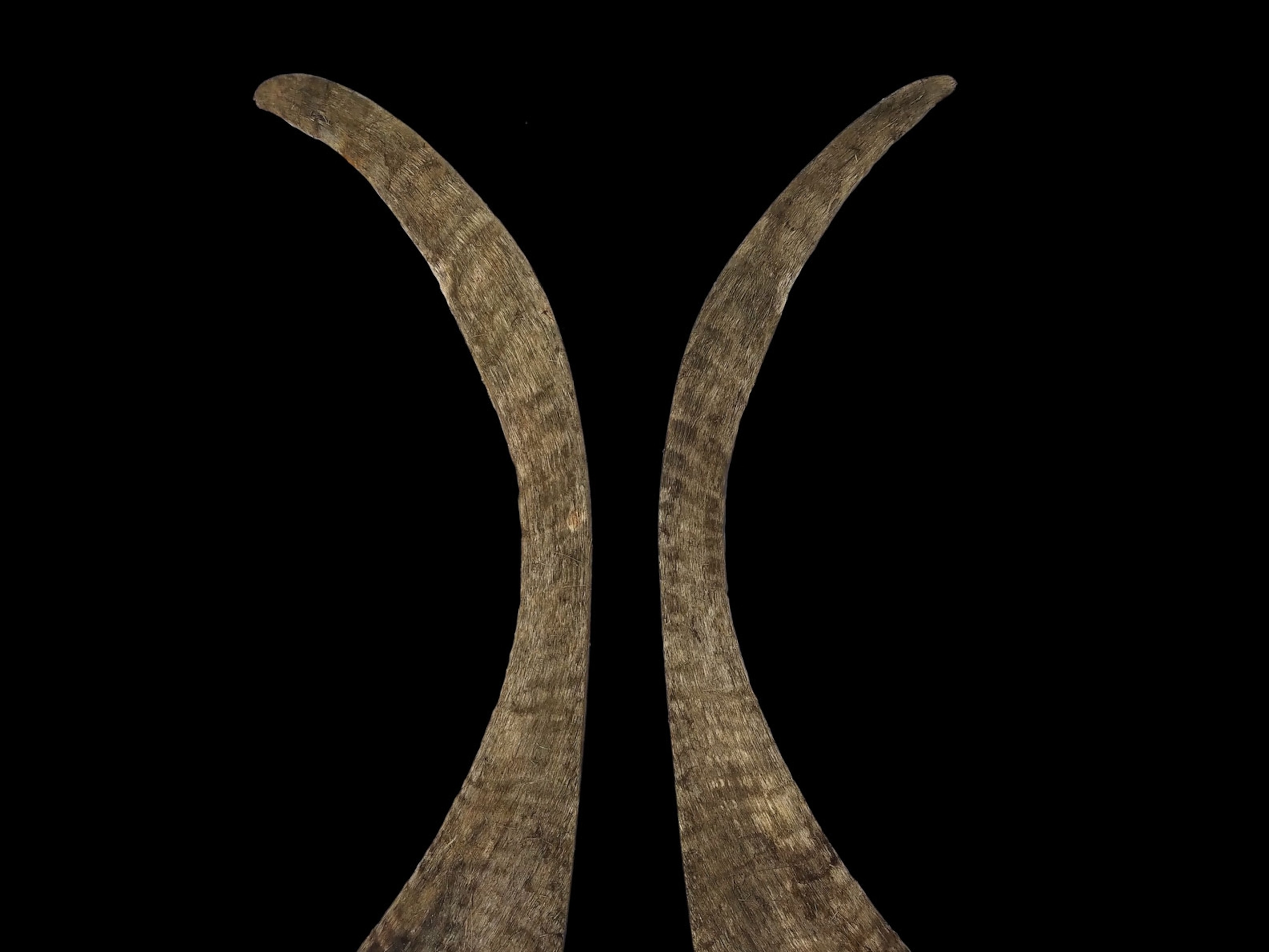Most Complete Ice Age Skeleton Helps Solve Mystery of First Americans
Ancient bones provide glimpse of the New World's earliest inhabitants.
The oldest complete skeleton of its kind ever found, dating to more than 12,000 years ago, is helping solve a mystery about the differences in body types between the first humans to arrive in the Americas and later Native Americans, scientists announced Thursday.
(Hobbit-Like Human Ancestor Found in Asia)
Anthropologists have long puzzled over why Native Americans don't look more like their ancient ancestors, who migrated into the Americas during the Pleistocene, the epoch that encompassed the last ice age and that ended about 12,000 years ago.

The ancient skulls are larger, their faces are narrower and more forward-projecting, and they more closely resemble native peoples of Africa, Australia, and the southern Pacific Rim than they do their supposed American descendants.
Were those differences the product of evolutionary changes in the founding populations? Or were the Paleoamericans, the first arrivals to the Americas, displaced by later migrations of people with features more like those of Native Americans?
On Thursday, a team led by archaeologist James Chatters reported in the journal Science that they'd found a big piece of the puzzle: the most complete skeleton of such antiquity ever found in the Americas, between 12,000 and 13,000 years old. The skeleton contains both the craniofacial features of ancient Paleoamericans and mitochondrial DNA possessed by latter-day Native Americans.
Tracing a DNA Trail
The skeleton, dubbed "Naia" (an ancient Greek name related to water nymphs) by her discoverers, belonged to a teenage girl who fell more than 100 feet to her death nearly a half mile inside an elaborate network of karst caves that were largely dry at the end of the Pleistocene. Divers who found Naia in the cave on Mexico's Yucatán Peninsula named her watery grave Hoyo Negro ("Black Hole" in Spanish).

Chatters described Naia's face as narrow with wide-set eyes and a low, prominent forehead; a low, flat nose; and outward-projecting teeth—"about the opposite of what Native Americans look like today." To see those features coupled with genetic markers indicating a common lineage with Native Americans is highly significant.
"This is the first time that we have genetic data from a skeleton that exhibits these distinctive skull and facial features," said Deborah Bolnick, an anthropological geneticist at the University of Texas at Austin and one of the study's co-authors.
The find from Hoyo Negro comes on the heels of the recent genomic sequencing of the 12,600-year-old remains of an infant found at the Anzick Clovis site in Montana, which also revealed a shared ancestry with Native Americans.
Genetic analyses of modern Native Americans indicate they descend from a founding population that originated in Asia. They were isolated from other population groups for several thousand years somewhere in or near the region known as Beringia, a broad swath of land that reached from Siberia to Alaska during the last glacial maximum.
It was there that this founding population developed its unique genetic markers. But until the Anzick discovery, little genetic data had been available from Paleoamerican skeletal specimens, leaving their relationship to Native Americans poorly understood.
The genetic data from the Anzick find is superior to that of Hoyo Negro's because it was derived from mitochondrial and nuclear DNA, providing a much more comprehensive lineage history than mitochondrial DNA alone, which traces only maternal lineages. But the downside of Anzick is that the specimen itself is much less complete: just four bones and the braincase portion of a cranium.
Michael Waters, director of the Center for the Study of First Americans at Texas A&M University in College Station, said the Anzick and Hoyo Negro finds complement one another.
"Now we've got two specimens, both from a common ancestor that came from Asia," he said. "Like Hoyo Negro, the Anzick genome shows that Paleoamericans are genetically related to native peoples, so the latter cannot be a replacement population. Their differences have to be a result of evolutionary change. What drove that change, we don't know."

From Hunters to Homemakers?
Chatters speculates that ancient Americans' morphology may have changed as their living conditions changed. As highly mobile hunter-gatherers became more settled, evolutionary processes may have selected for more domestic traits and temperaments, resulting in the softer, rounder features seen in the faces of Native Americans.
You May Also Like
"You start seeing these more domestic forms when females have more control over the food supply, when they're not so dependent on aggressive men," Chatters said. He added that this process of neotenization—the retention of some juvenile traits—can be seen in populations across the Northern Hemisphere between the late Pleistocene and modern times.
Speculation about the potential drivers of evolutionary change is not part of the team's study. Even so, some scientists warn against drawing too many conclusions from the Hoyo Negro find.
"We know there's a tremendous variation in physical form, and the sample of crania we have from that time period is so tiny," said David Meltzer of Southern Methodist University, Dallas, Texas. "Imagine plucking a dozen skulls from New York City; they wouldn't look a lot alike. We've got to be really careful about drawing conclusions based on relatively small samples. That's true for the skeletal anatomy, and it's true for the genetic record as well."

Getting to Know Naia
Flooded now by higher sea levels, the Sac Actun cave system in the Mexican state of Quintana Roo is one of the two largest surveyed underwater cave systems in the world. (Read "Secrets of the Maya Underworld" in National Geographic magazine.)
In 2007, while exploring and mapping the system, divers discovered a suite of bones at the bottom of a huge chamber. The bones included those of extinct saber-toothed cats, giant ground sloths, and other Pleistocene animals—as well as Naia's skeleton.
The girl was "probably in search of water," said archaeologist Dominique Rissolo, the project's co-director. "Water would have been scarce with the water table that low. There are no lakes and rivers in the area, so people and animals would have had to venture into caves."
Naia was found with a broken pelvis, probably from the impact of the fall—a hard end to what was likely a hard life. She shows signs of tooth decay and osteoporosis, perhaps as a result of becoming pregnant at an early age, before reaching full physical maturity. "She was absolutely tiny," Chatters said.
The submergence of the cave between 10,000 and 4,000 years ago helped preserve Naia's skeleton, and the lack of sediment deposition left her bones in clear sight for the divers. "She is heavily mineralized, so there's a strong, hard quality to the bones, which is great for getting skeletal measurements," Rissolo said. "But for dating, it's a different situation altogether."
Without any bone collagen for radiocarbon dating, the team triangulated the skeleton's age by determining the age of calcite crystals known as "florets" growing on the bones, carbon-dating nearby bat guano, and carbon-dating Naia's tooth enamel.
All that, coupled with the nearby Pleistocene-era animal remains and estimates of when the cave would have flooded, led the team to conclude she was at least 12,000 years old, and perhaps closer to 13,000.
Part of her remains have been removed from Hoyo Negro for safekeeping, after unauthorized divers entered the chamber to take photographs, moving and damaging some bones in the process.
"We tried to keep everything in situ," said Mariá del Pilar Luna Erreguerena, head of underwater archaeology for Mexico's National Institute of Anthropology and History, which coordinated the Hoyo Negro project with support from the National Geographic Expeditions Council.
But leaving Naia's remains in place was deemed too big a risk. Her watery grave is an attractive target, one Chatters likens to "a mini La Brea Tar Pits, only without the tar and considerably better preservation."






